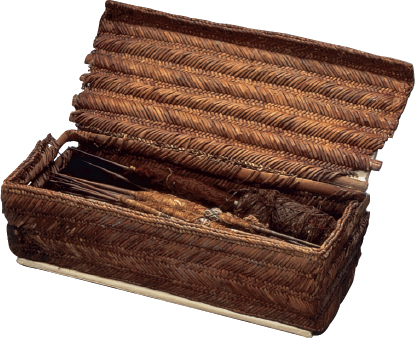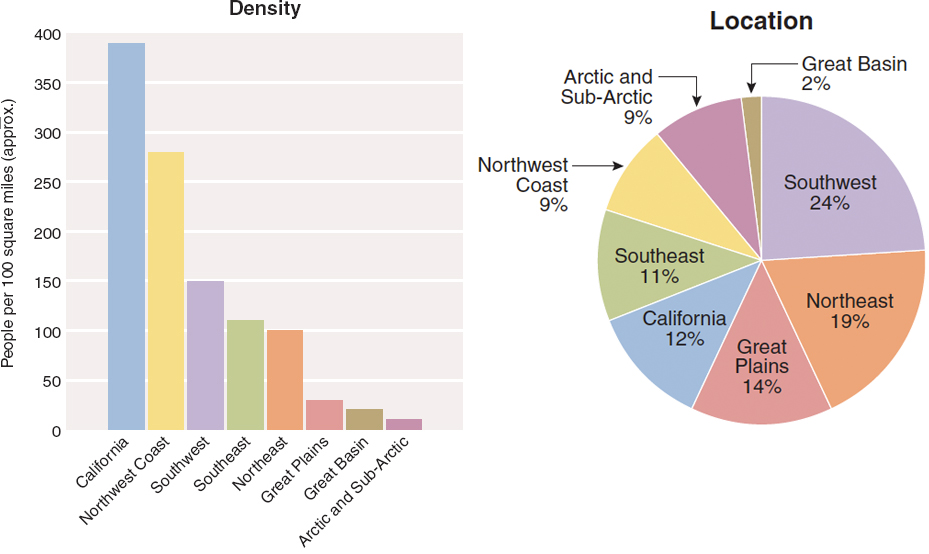What cultural similarities did native peoples of the Western Hemisphere share in the 1490s?
Printed Page 18

ON THE EVE of European colonization in the 1490s, Native Americans lived throughout North and South America, but their total population is uncertain. Some experts claim that Native Americans inhabiting what is now the United States and Canada numbered 18 million to 20 million, while others place the population at no more than 1 million. A prudent estimate is about 4 million, or about the same as the number of people living on the small island nation of England at that time. The vastness of the territory meant that the overall population density of North America was low, just 60 people per 100 square miles, compared to more than 8,000 in England. Native Americans were spread thin across the land because of their survival strategies of hunting, gathering, and agriculture, but regional populations varied (Figure 1.2).
KEY FACTORS
In 1492, Native Americans populated all of North America:
- – One-fifth lived along the Pacific coast.
- – One-fourth lived in the Southwest.
- – One-third lived east of the Mississippi.
- – One-fourth lived in the regions of the Great Plains, the Great Basin, and the Arctic.

CHAPTER LOCATOR
When and why do historians rely on the work of archaeologists?
How and why did humans migrate into North America?
Why did Archaic Native Americans shift to foraging and hunting smaller animals?
How did agriculture influence Native American cultures?
What cultural similarities did native peoples of the Western Hemisphere share in the 1490s?
Why was tribute important in the Mexican empire?
Conclusion: How do we understand the worlds of ancient Americans?
 LearningCurve
LearningCurve
Check what you know.